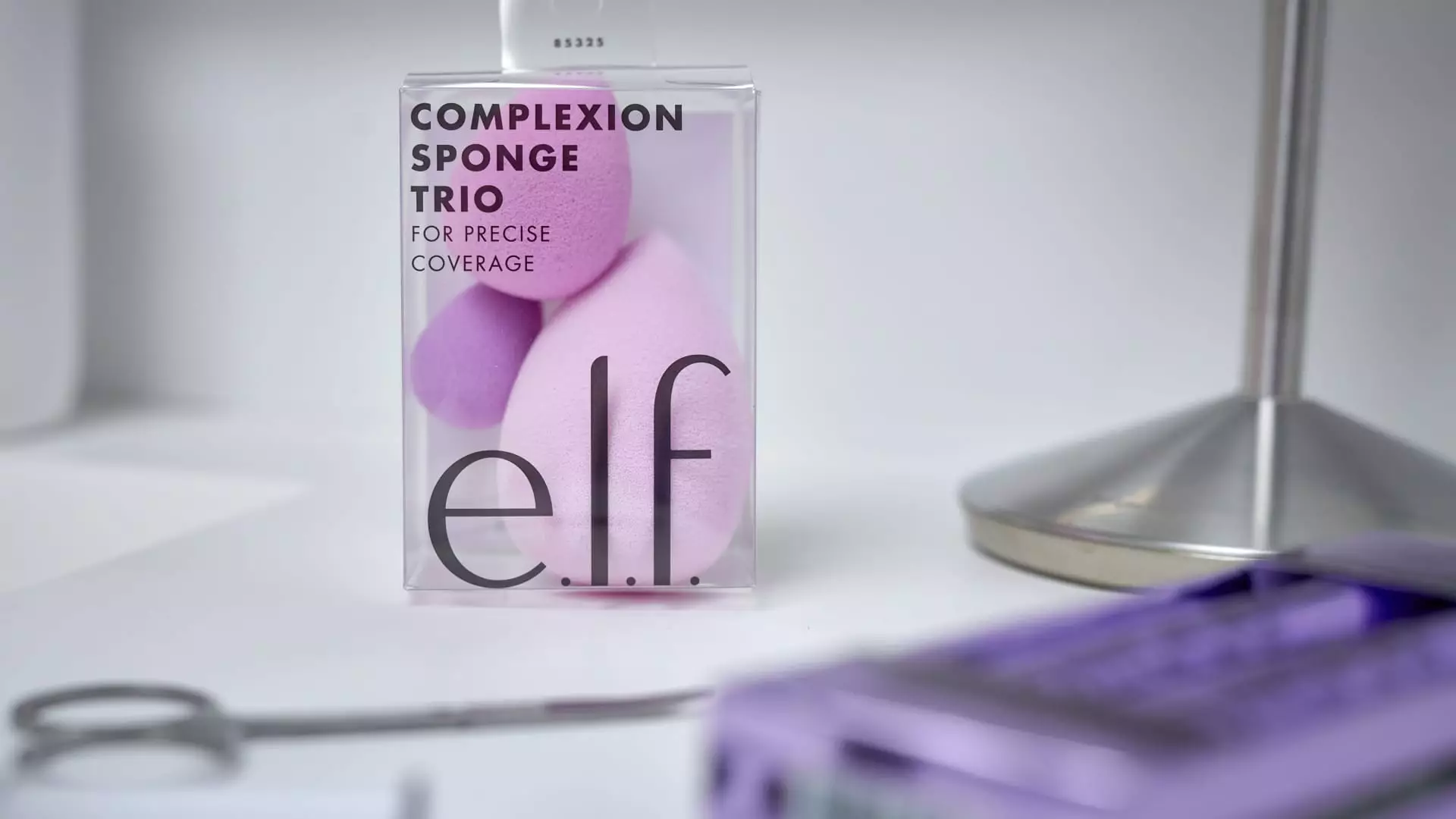The beauty industry, often deemed resilient even through economic downturns, faces its own set of challenges that can affect even its most popular brands. E.l.f. Beauty, a company that has positioned itself as a trailblazer in the affordable cosmetics sector, recently navigated through turbulent waters, prompting an adjustment in its financial outlook for the year. With a significant drop in profits and disappointing sales trends reported in January, E.l.f. has become a focal point for discussions around market dynamics and industry fluctuations.
In its latest earnings release, E.l.f. Beauty revealed a staggering 36% drop in profit, which came as a shock to investors and stakeholders. While the overall holiday sales exceeded expectations—reaching $355 million compared to the anticipated $330 million— the profit margins did not align with Wall Street’s predictions. Instead of the estimated adjusted earnings per share of 75 cents, E.l.f. came in slightly lower at 74 cents. This marks an unusual occurrence for the brand, which has been known for consistent performance and growth.
The company’s reported net income for the fiscal third quarter, which concluded on December 31, stood at $17.3 million, a stark decline from the previous year’s $26.9 million. Analysts are particularly interested in the underlying factors contributing to this downturn. By excluding one-time items such as stock-based compensation and acquisition-related expenses, E.l.f. aimed to present a clearer picture of its financial health. However, the reality is that the brand’s recent struggles signal a potential shift in how consumers approach beauty spending in a changing economic landscape.
Perhaps more critical than the immediate profit drop is E.l.f.’s revised full-year guidance. The company now anticipates sales between $1.3 billion and $1.31 billion, which falls short of Wall Street’s expectations of $1.34 billion. This downward revision is striking, considering that E.l.f. had initially projected a more optimistic forecast of $1.32 billion to $1.34 billion. Moreover, the adjusted earnings per share are now expected to be between $3.27 and $3.32, significantly lower than the previously anticipated $3.54.
This cautious outlook paints a concerning picture for investors, driving shares down over 20% in after-hours trading. The current quarter is also projected to be challenging, with analysts anticipating earnings per share to be much lower than expectations, at only 66 to 71 cents, compared to the predicted 97 cents. Such grim forecasts suggest that the previous growth momentum may be faltering.
In a recent interview, E.l.f. CEO Tarang Amin attributed the company’s struggles to broader market trends rather than internal issues. He noted a decline of 5% in the mass cosmetics market during January, largely influenced by factors such as post-holiday shopping behaviors and a noticeable drop in “social commentary” surrounding beauty products. These insights reflect the shifting dynamics within the beauty industry — as consumer interest wanes and social media platforms evolve, E.l.f. must navigate these changes to sustain its growth.
Amin mentioned that the recent wildfires in Los Angeles and uncertainties surrounding platforms like TikTok have contributed to this decline in beauty-related discourse. These context-driven factors highlight the underlying complexities of marketing and consumer engagement in today’s social media landscape, where brand visibility can be significantly impacted by extraneous events.
Despite the setback, E.l.f. remains committed to its core principles of delivering high-quality cosmetics at accessible prices. The company is strategically focusing on enhancing its inventory management and infrastructure in preparation for future growth. Moreover, as E.l.f. sources a substantial portion of its supply chain from China, the onset of new tariffs complicates the landscape further. While Amin suggests that price hikes may not be immediately necessary, the potential for increased duties underscores the importance of adaptability and proactive planning in the company’s operational strategy.
As E.l.f. navigates these financial hurdles, it’s critical for the company to re-establish its foothold in an evolving beauty market. The era of rapid expansion may be shifting toward a landscape that requires brands to cultivate deeper relationships with consumers while embracing innovative marketing tactics. Ultimately, it will be imperative for E.l.f. to respond not only with resilience but also with a foresight that aligns with the needs and desires of its customer base to ensure continued relevance in the competitive beauty industry.

